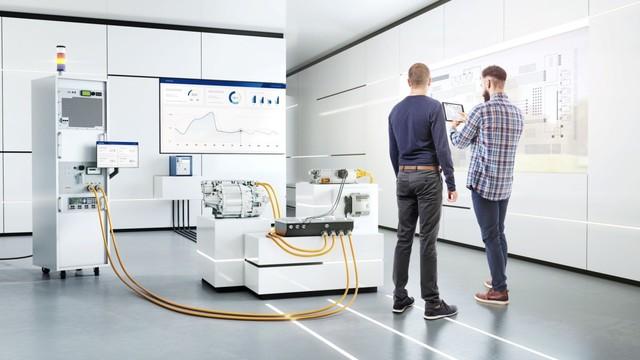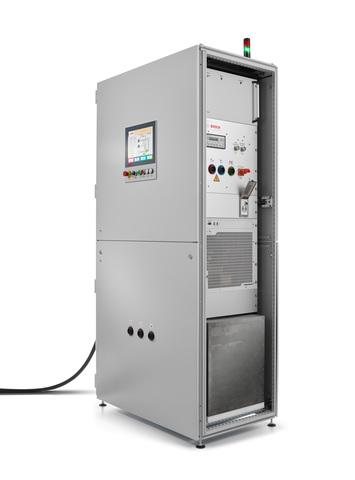Bosch: Efficiently Testing E-Vehicle Electronics Power
May the Force Be with You
The number of electric vehicles on offer is steadily increasing worldwide. As a consequence of this growing number of new models and platforms, engineering work involved for the vehicles’ high-voltage system components is on the increase too. This is where Bosch Engineering comes in: with its new high-voltage lab rig (HVLR), the company now offers a fast, efficient and, above all, safe solution for testing the electric vehicle power electronics in the development lab. The system integrates a high-voltage power supply and electronic safety functions for the circuit of the component under test in a portable compact control cabinet. “Many of the tests on the power electronics of electric vehicles can therefore be shifted from the test bench to the high-voltage laboratory. This frees up valuable bench capacity for other testing and validation tasks, thereby reducing development time and costs,” says Andreas Nachreiner, Head of Product Management Business Field eMobility at Bosch Engineering.

Thanks to its modular design, the test system can be flexibly adapted to individual customer requirements. For example, different voltage levels of up to 1200 volts as well as different communication interfaces and an optionally integrable dummy load can be selected. Subsequent upgrading, for example to higher output voltages of up to 1500 volts, is possible as well. The system is conveniently operated via a touch-screen display. The monitor also provides a clear-cut overview of all operating parameters such as status messages, information on system settings, and any error warnings.
Bosch: High Level of Safety Against Life-Threatening Voltage
A key focus in the design of the high-voltage lab rig was safety in everyday test operations. “In the laboratory, a large number of tests have to be carried out directly on the live components of the power electronics. Any mistakes here are life-threatening. Our protection concept covers potential causes of accidents and reduces the risks when working on the high-voltage circuit,” explains Heinz-Georg Schmitz, Director Engineering Mechatronic Solutions at Bosch Engineering. Another resulting advantage is the protection of the test object from damage during testing. This is particularly advantageous for prototype components that are only available in small quantities and where defects would lead to delays in the development process.

The safety functions are implemented by a separate unit, the high-voltage safety box (HVSB). This was developed in accordance with DIN EN ISO 13849 and offers, among other things, isolation monitoring, an interlock circuit, integration into a laboratory emergency shut-off concept and a PLC interface with which the HVLR can be seamlessly integrated into the test automation of the high-voltage laboratory and operated remotely. The high-voltage safety box is included with the high-voltage lab rig, but is also available as a separate module, for example to retrofit the safety functions and the PLC interface to existing high-voltage power supplies.
COMPANY DETAILS |

|
|
Company |
Bosch Automotive |
|
Website |
|
|
Connect |
   
|
|
Contact |
|
|
Phone |
(917) 421-7209 |
|
Address |
38000 Hills Tech Drive |
|
Farmington Hills, MI 48331 |
ABOUT Bosch Automotive®
Having established a regional presence in 1906 in North America, the Bosch Group employs nearly 32,800 associates in more than 100 locations, as of December 31, 2016. In 2016 Bosch generated consolidated sales of $13.7 billion in the U.S., Canada and Mexico.





